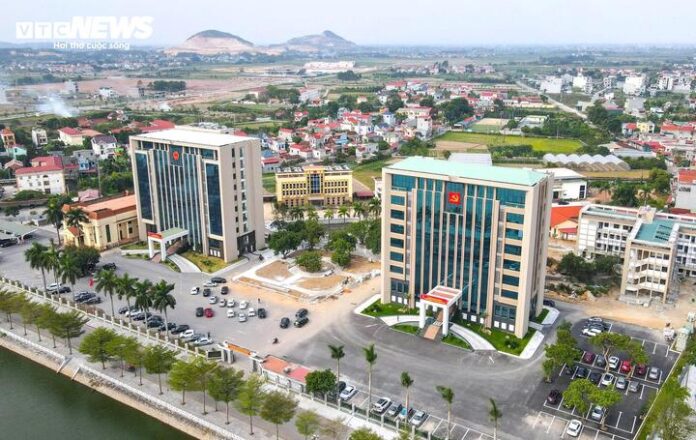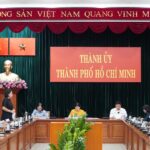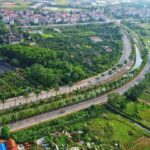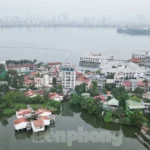The Bac Giang Provincial Department of Finance reported that the province has 244 offices that need to be rearranged following the merger of communes and the elimination of the district level. Localities proposed retaining 136 offices for the new communes and wards, leaving 108 surplus offices.
Of the surplus offices, 79 are expected to be converted for cultural, educational, and healthcare purposes or used as offices for other agencies. The remaining 29 offices, which have not yet been allocated, will be handed over to the Land Development Center for management and exploitation.
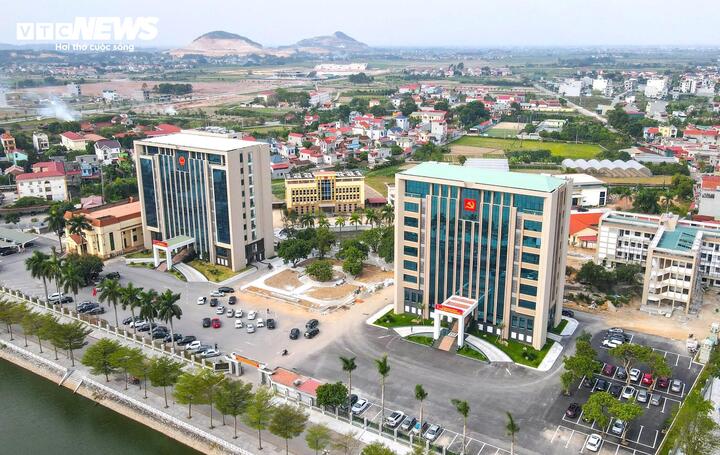
The office of the Party Committee and People’s Committee of Viet Yen Town is expected to be handed over to the management of the Industrial Park Management Board and the new Bac Ninh Province Inspectorate after the merger.
Sharing the orientation, Mr. Nguyen Dinh Hieu, Director of Bac Giang Provincial Department of Finance, said: “The handling of surplus offices is a complex task that requires close coordination between departments, sectors, and localities. We are giving the highest priority to converting these offices into facilities that directly serve the people, especially in the fields of healthcare, education, and culture.
These are essential areas that directly impact the quality of life and human development. This will not only save the budget but also contribute to improving the infrastructure serving the community.”
According to the Director of the Department of Finance, many existing offices are solidly built and favorably located. However, converting them for commercial or residential purposes would require significant renovation costs. On the other hand, using them as schools, health stations, or cultural centers is more suitable, saving new investment costs and bringing practical benefits to the people.
“In many communes, especially mountainous ones, the infrastructure for healthcare and education is still limited. Schools lack functional rooms, and health stations lack space to expand their services and clinics. Receiving these surplus offices will help reduce the burden on higher levels and enable people to access better healthcare and educational services in their localities, especially those in remote and mountainous areas,” said Mr. Hieu.
However, the conversion process also faces challenges in terms of renovation costs, personnel arrangement, and asset maintenance and management after the conversion to prevent waste and deterioration.

The People’s Committee of Viet Ngoc Commune, Tan Yen District will have its function converted to another purpose.
Mr. Nguyen Dai Luong, Chairman of Viet Yen Town People’s Committee, said that before the merger, the town had 17 communal-level units, which have now been reorganized into four wards. This arrangement left 14 old offices unused.
“We have been carefully inspecting each facility to come up with the optimal usage plan. Some old communal offices have been proposed to be converted into auxiliary health stations, village cultural houses, or kindergarten campuses. This will help reduce the burden on existing facilities and bring public services closer to the people, especially in areas far from the center,” added Mr. Luong.
So far, 11 out of 14 offices have had their functions converted, and the remaining three have been handed over to the Land Development Center and the Industrial Cluster for management. According to Mr. Luong, utilizing the existing infrastructure not only saves new investment costs but also contributes to accelerating the upgrading of essential infrastructure and improving public service accessibility for local people.
Mr. Dang Dinh Hoan, Chairman of Bac Giang City People’s Committee, said that before the merger, the city had 45 offices (not including independent units). After the rearrangement, 22 offices continued to be used for the new wards, leaving 23 surplus offices.
Of these, 12 offices have been allocated to agencies in need, and the remaining 11 have been handed over to the Land Development Center for management. Mr. Hoan emphasized that the merger provides the city with additional land and structures for urban redevelopment and improved public services.
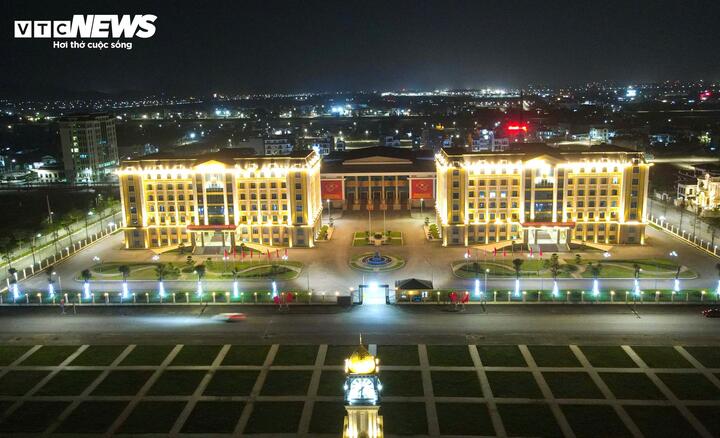
The office of the Bac Giang City Party Committee and People’s Committee is expected to be handed over to Bac Ninh province for use as a new office after the merger.
“Bac Giang City is the center of the province, with a high population density and a large demand for public services. The merger provides us with additional land and structures to re-plan the urban space and improve service quality.
We are particularly interested in using the surplus offices to expand schools, medical facilities, and community cultural activities and entertainment spaces. For example, some old offices in the wards can be renovated into kindergartens to meet the urgent needs of local residents,” Mr. Hoan emphasized.
The Diamond City – A Visionary Urban Development in the Heart of Mong Cai
In a dynamic and ever-shifting real estate market, Mong Cai stands out as a beacon of opportunity. This vibrant city is attracting significant investment and is a shining example of a thriving property market.
The Capital’s New Infrastructure Project: A $14 Million Endeavor for Two Roads Spanning Almost 1.5 Miles
The upcoming road development projects in Dan Phuong and Thuong Tin are set to be transformative for the regions. With a combined investment of over 335 billion VND, the 1.6-kilometer stretch in Dan Phuong and the 0.87-kilometer section in Thuong Tin, slated for construction between 2025 and 2027, will significantly enhance transportation infrastructure and connectivity in the areas.
What the Experts Say About the Proposed West Lake Tunnel Project: Connecting Tu Lien Bridge and Thuy Khue
The Pacific Construction Group has proposed an innovative solution to the city of Hanoi’s transportation challenges: a tunnel beneath West Lake. This ambitious project would connect the bridge approach road to the tunnel and the opposite side, emerging onto Thuy Khue Street. This bold idea offers a unique opportunity to enhance the city’s infrastructure and improve traffic flow, providing a seamless and efficient transportation network for residents and visitors alike.

